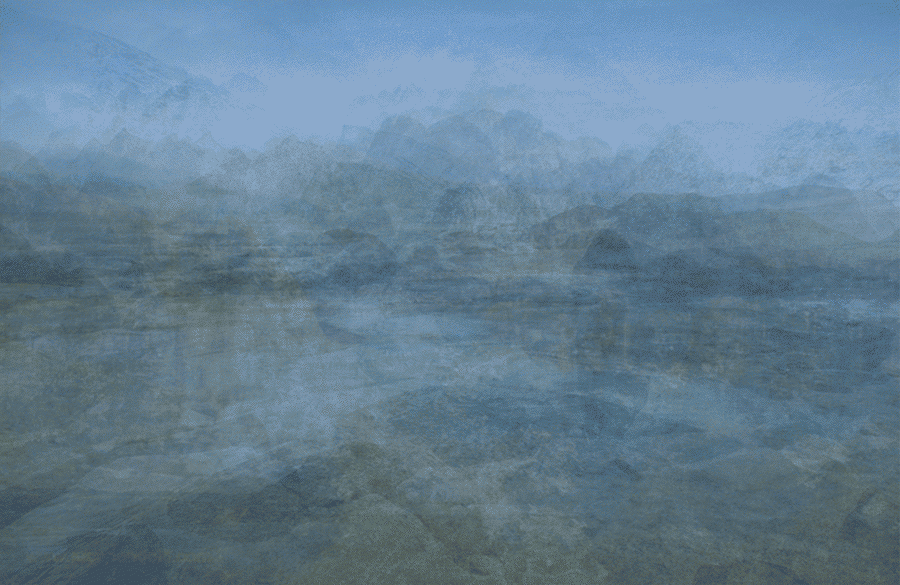There’s a pervasive melancholia – and an oddly welcome sense of nihilism – that runs through Disappearing Acts, curators Matt Packer and Arne Skaug Olsen’s exhibition, housed in an old hardware store, for the eighth edition of this festival. To title a show thus, especially one located in the small Norwegian town of Svolvær, on the Lofoten islands, 186km above the Arctic Circle, might suggest some ecological concern. Instead, hand-wringing is little in evidence. In its place is an acceptance that the end of the world is coming, an apocalypse consequential of.technology and the burning of fossil fuels that drive our psychotic obsession with progress. Cue a show of works that variously pull on themes of survivalism, futurology and cultish utopianism, and which, more than anything, seem uncertain as to art’s place among all this (a violin-based analogy might be apt, but the 22 artists seem uncertain as to whether they are Nero or the orchestra on the Titanic).
Typical of the latter attitude is Tue Greenfort’s Flambant Neuf (2010), a circular architectural installation made from drywall that houses a film in which the artist and his gallerist, Johann König, alongside (presumably) their respective children, build a fire in König’s gallery. There’s an exhibition (not by Greenfort) installed in the space, but all eyes are on the slow buildup of smoke and the eventual licking flames. If the work demonstrates nature’s apparently timeless ability to command our attention (and artistic impotence in the face of this), the hierarchy between humans and their environment is made explicit in Anna Ådahl’s three-screen projection and sculptural installation Impossible Image (2015). The work incorporates a pile of sand from one of the nearby beaches, a few grains of which are placed under a microscope and relayed via one screen. A second screen, meanwhile, shows digitally layered images of the dramatic Arctic landscape outside the exhibition venue. And the third, presenting a silent video portrait of Norwegian naturalist painter Christian Krohg – who, the work states in subtitles, described Lofoten as having a ‘relentless indifference to humans’ – reconnects to Burkean narratives of the sublime, a counter to contemporary art’s otherwise largely uneasy and arm’s-length relationship with nature, as compared to the embrace of centuries previous.
Instead ‘sublime’ has come to mean ‘techno-sublime’ – a point aptly demonstrated in Elizabeth Price’s West Hinder (2012), a slick, mesmerising video that revels in the ludicrous visual and spoken language of car adverts. However, maybe we’re nearing a turning point (in art at least), and our breathless tryst with technology will begin to cool. Katja Novitskova’s Pattern Activation (Loki’s Castle) (2015), machinelike kinetic sculptures derived perhaps from hacked gym equipment and apparently inspired by some Wikipedia-level scientific research, look oddly dated: art hungover from an era blindly obsessed with digital culture that seemed facile then and looks worse now.
Instead, the work that holds its own against the macro-thinking themes wrapped around it by Packer and Skaug Olsen is that which engages nature on nature’s terms. Elizabeth Nolan’s series of formalist sculptural assemblages incorporating broken flagpoles suggest a world of crumbling manmade infrastructure; Jon Benjamin Tallerås’s photographs of small (but through his lens strangely significant) incidents of urban decay around Svolvær are poignant reminders of human transience. Most powerful, though, is Visitation Rights (2015), an installation by Juha Pekka Matias Laakkonen. Made while camping on a nearby desolate island (a fact hinted at by the presence of a rolled-up tent), it’s a veneration of the landscape: here, a small dishlike object made of pine resin, which according to the materials list has been heated over a fi re of moose dung, is suspended by twine from the ceiling. In the aforementioned Ådahl’s work there is a subtitle that notes, ‘If you lived in the Stone Age you wouldn’t know what you know now and the world wouldn’t be so simple.’ Laakkonen’s sculpture looks to a new, self-aware primitive age. The question of whether we should relish this or fear it is, however, left hanging.
Read our Biennial Questionnaire with the curators of Lofoten International Art Festival.
This article was first published in the October 2015 issue.
